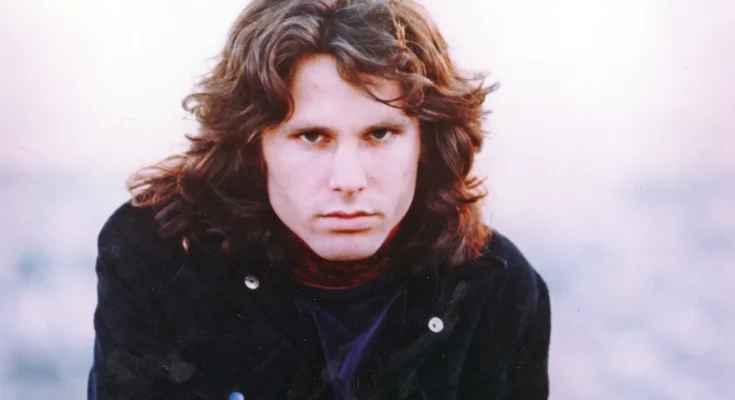On this day in 1967, The Doors released one of the most iconic songs in rock history, a track that would come to define the band and cement their place in music culture for decades to come. This song, written by the enigmatic and deeply introspective frontman Jim Morrison while he wrestled with his own inner turmoil in Los Angeles, captured a rawness and honesty that few artists have managed to achieve. It wasn’t just a song; it was a window into the mind of one of rock’s most compelling figures, and it reflected the zeitgeist of a decade defined by upheaval, experimentation, and a hunger for new forms of expression.
Morrison, who had always been a poetic and deeply reflective soul, wrote the lyrics during a particularly difficult period in his life. Los Angeles, with its sun-drenched streets and sprawling cityscape, was at once inspiring and isolating. The bustling metropolis provided a backdrop of energy and creativity, yet it also heightened the sense of alienation Morrison felt. Known for his larger-than-life stage presence, Morrison often projected confidence and charisma, but his writing revealed a man grappling with feelings of depression, disillusionment, and the existential questions that had always fascinated him. The song’s lyrical content mirrors this duality: at once dark and contemplative, yet undeniably compelling and hypnotic, it draws listeners into a shared experience of human vulnerability.
The release of this song in 1967 coincided with a moment in American culture that was ripe for artistic experimentation. The mid-to-late 1960s saw the emergence of psychedelic music, a genre that sought to break free from conventional structures and explore altered states of consciousness through sound. The Doors were at the forefront of this movement, and their signature song exemplified their unique approach. Unlike many of their contemporaries, The Doors combined poetic lyrics with complex musical arrangements, fusing rock, blues, and jazz influences to create a sound that was both innovative and accessible. The keyboard work of Ray Manzarek, the guitar riffs of Robby Krieger, and the drumming of John Densmore all contributed to a sonic landscape that perfectly complemented Morrison’s introspective words.
One of the most striking elements of the song is how it encapsulates the essence of Morrison’s personal struggles while remaining universally relatable. The lyrics convey a sense of searching and longing, reflecting Morrison’s desire to understand his own place in the world. Lines that speak to isolation, fear, and the darker aspects of human experience resonate with listeners because they tap into emotions that everyone has encountered. Morrison’s ability to articulate these feelings with poetic elegance made the song both a personal confession and a communal experience. Fans of The Doors often recount how listening to the song felt like an intimate conversation with the singer, as if Morrison were reaching out across the years to connect with those who had felt the same inner conflict he did.
The musical arrangement of the song further amplifies its emotional impact. Manzarek’s keyboards, often drawing from classical influences and imbued with a sense of drama, create a haunting atmosphere that mirrors the lyrical themes. Krieger’s guitar work adds both tension and release, weaving intricate patterns that push and pull against the rhythm. Densmore’s drumming, disciplined yet fluid, anchors the composition while allowing the other instruments to explore space and texture. Morrison’s vocals, delivered with a combination of vulnerability and intensity, serve as the emotional core of the piece. The interplay between these elements results in a song that is as musically sophisticated as it is emotionally resonant, demonstrating The Doors’ ability to transcend the boundaries of traditional rock music.
It is also important to consider the cultural and historical context in which the song was released. 1967 was a year of profound social and political change. The counterculture movement was gaining momentum, fueled by widespread opposition to the Vietnam War, the civil rights struggle, and a generational desire to challenge authority and redefine societal norms. Music became a powerful vehicle for expression and protest, and The Doors, with their provocative lyrics and theatrical performances, embodied this spirit of rebellion. The song’s release tapped into a collective consciousness that was hungry for authenticity and willing to confront uncomfortable truths. Its success was not only a testament to the band’s musical talent but also to their ability to articulate the feelings of an entire generation.
Jim Morrison’s personal life at the time of writing the song adds another layer of depth to its significance. Morrison’s struggles with mental health, substance use, and his complex relationships were well documented, and these experiences inevitably influenced his songwriting. The song can be seen as both a reflection of Morrison’s inner turmoil and an attempt to process it through art. Writing and performing became outlets through which he could explore the darker corners of his psyche, transform pain into beauty, and communicate his experiences in a way that resonated with others. This ability to translate personal suffering into universally compelling art is one of the reasons Morrison continues to be celebrated as a poet and a visionary artist, decades after his untimely death.



